Patients
Anatomy
Spine Disorder Definitions
Allograft
Allograft bone is bone that has been obtained from a donor cadaver and carefully prepared for implantation.
Anterior Lumbar Interbody Fusion (ALIF)
An interbody spacer is inserted into the disc space from the front of the lumbar spine to support fusion of the vertebrae.
Autograft
Autograft bone is healthy bone that is obtained from the patient’s own body, usually the iliac crest.
Cervical Plate
Cervical plates are fastened to two or more vertebrae and are intended to provide immobilization and stabilization of spine segments as an adjunct to fusion
Cobalt-Chromium (CoCr)
Cobalt-chromium is an alloy comprised of cobalt and chromium and is widely used in medical devices due to its strength, corrosion resistance and excellent biocompatibility
Degenerative Disc Disease (DDD)
Degenerative Disc Disease is the deterioration of the vertebral discs between the vertebrae of the spinal column.
Discectomy
A surgical procedure to remove a herniated or damaged portion of a disc in the spine. The purpose of a discectomy is to relieve symptoms caused by the pressure that a herniated disc places on spinal nerves.
Fixation
In some cases metal plates, rods and screws are used to keep the bones together and improve the chance that the bones will fuse together.
Intervertebral Body Fusion (IBF)
Spinal fusion is used to treat pain caused by misalignment or instability of the vertebrae. A bone graft or a spinal implant is placed between two vertebrae (vertebral bodies) replacing the disc. Eventually bone grows between the vertebrae fusing that part of the spine. If used, the bone graft may come from an area on the patient’s hip (autograft) or a donor (allograft).
Interbody Spacer
A spacer is a cage-like structure inserted between two vertebrae replacing the existing disc. The spacer creates space between the vertebrae relieving pressure on the spinal nerves and providing the framework for new bone growth. Spacers can be made of various materials such as PEEK or titanium and are often filled with bone graft to promote fusion.
Kyphoplasty
A surgical procedure to repair vertebral compression fractures. A balloon-like device is used to create space in the fractured vertebrae, and then a cement-like material is injected into the space.
Laminectomy
A surgical procedure to treat spinal stenosis is called laminectomy. The doctor removes the portion of the vertebrae called the lamina so the pressure on the nerves is relieved.
Lateral Lumbar Interbody Fusion (LLIF)
An interbody spacer is inserted into the disc space from the side of the lumbar spine to support fusion of the vertebrae.
Lordosis
Lordosis is the normal convex curvature of the cervical and lumbar regions of the spine. Spinal implants (spacers) are designed with varying degrees of lordotic angles to preserve the patient’s natural lordosis.
PEEK
Polyetheretherketone (PEEK) is a thermoplastic polymer with properties favorable for bio-medical applications such as bone replacement.
Pedicle Screw System
Pedicle Screw Systems consist of metal rods connected to screws which have been <driven into> the pedicle portion of the vertebrae and are intended to provide immobilization and stabilization of spine segments as an adjunct to fusion.
Posterior Lumbar Interbody Fusion (PLIF)
An interbody spacer is inserted into the disc space from the back of the lumbar spine to support fusion of the vertebrae.
Stenosis
Stenosis is a narrowing of a passage in the body. Spinal stenosis can put pressure on the spinal cord and spinal nerves as they exit the spine.
Tantalum
Tantalum is an element that is highly corrosion-resistant and does not react with or irritate the body. Tantalum is radioopaque and is often used as markers in a medical device allowing the surgeon to more-clearly see an otherwise radiolucent implant in an x-ray
Titanium
Titanium (often alloyed with aluminum and vanadium in medical devices) is the most bio-compatible of all metals due to its corrosion resistance, strength, light weight and excellent flexibility. Titanium has excellent biocompatibility, is non-magnetic and non radio-opaque.
Transforaminal Lumbar Interbody Fusion (TLIF)
An interbody spacer is inserted into the disc space from the back of the lumbar spine to support fusion of the vertebrae.


